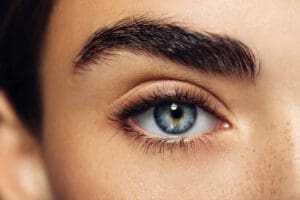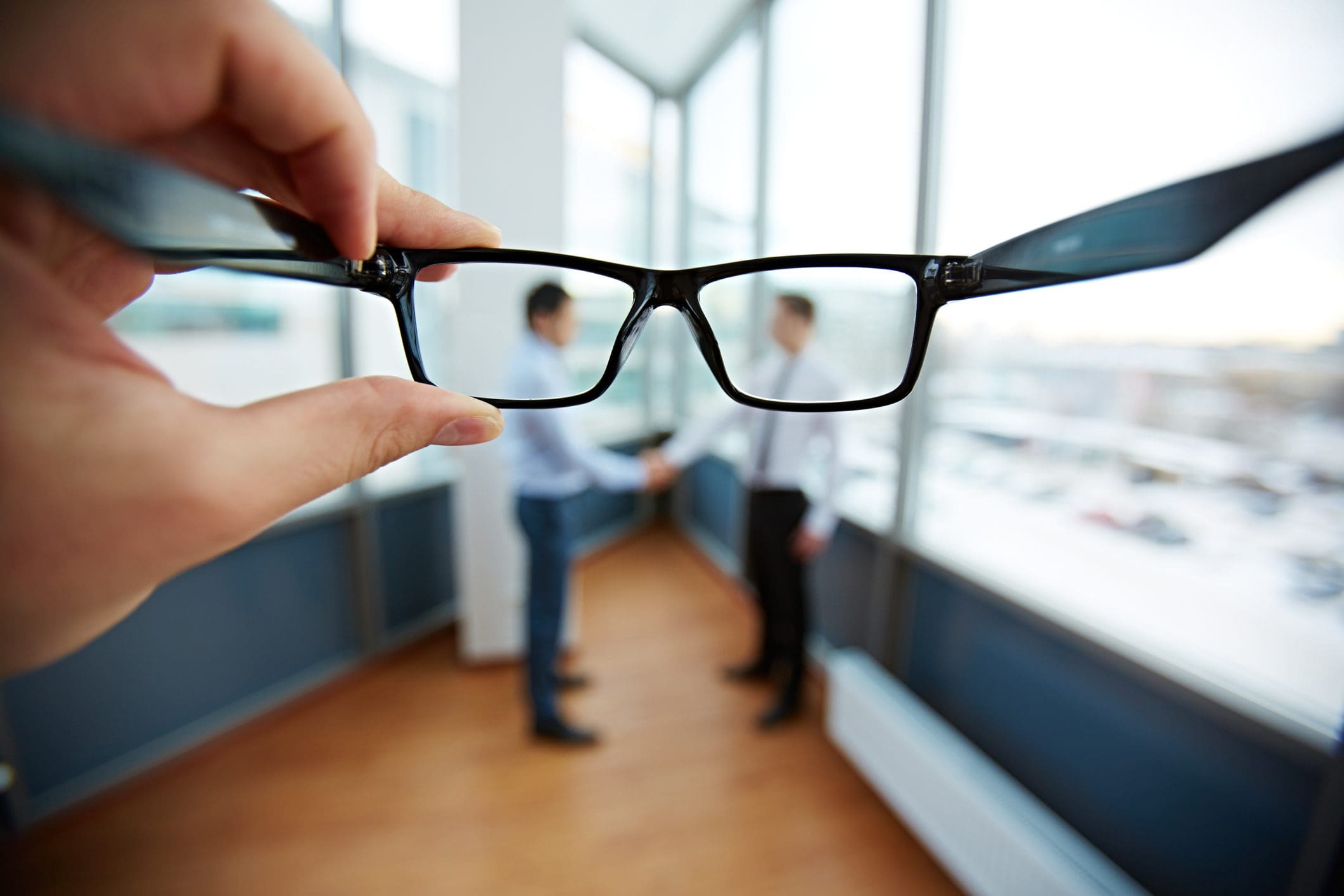What Percent of Bladless Lasik Patients Never Wear Glasses Again
When Eyeglasses Are Necessary
Although significant advancements have been made in corrective vision surgeries like LASIK, there are instances when eyeglasses may yet exist necessary or a more appropriate correction pick. People experiencing presbyopia, for case, are still most commonly recommended reading spectacles to make up for the changes in their vision.
There are various signs that you may need eyeglasses.
- Blurred vision
- Double vision
- Objects appearing fuzzy
- Headaches
- Squinting
- Halos around objects in brilliant light
- Eyestrain
- Distorted vision
- Trouble seeing and driving at nighttime
Eyeglasses are a relatively unproblematic prepare that can alleviate the in a higher place symptoms.
If you are experiencing whatsoever of these weather, speak with an eye doctor almost your potential demand for cosmetic lenses. Co-ordinate to the American Academy of Ophthalmology, over 150 million Americans apply some class of corrective eye habiliment. If you need a corrective vision intervention, but prefer not to undergo surgery, eyeglasses are a very effective and common solution.
Table of Contents
-
- When Is LASIK Appropriate?
- Needing Spectacles
- Issues Stemming From Presbyopia
- Correlation Betwixt Age and Reading Glasses
- Different Types of Vision Correction
- When Eyeglasses Are Necessary
LASIK surgery has a very loftier success rate at helping people reduce their dependence on using glasses or corrective lenses throughout the twenty-four hour period. LASIK has been scientifically developed to provide meaning improvement in vision for those suffering from conditions similar myopia, hyperopia, and astigmatism.
While LASIK can profoundly reduce use of glasses or contact lenses throughout the solar day, it does not claim to eliminate the need fully. Anybody responds to the surgery slightly differently. Depending on age and other vision weather condition, glasses may still be needed later LASIK, peculiarly for reading.
Certain center weather, such as presbyopia, are not typically treated through LASIK. Presbyopia is a natural condition that everyone experiences to some degree as they age. As of still, LASIK is not an approved treatment in the U.S. for presbyopia.
For people in demand of vision correction, in that location are many options available. There are various FDA-approved surgical approaches to vision correction, which includes LASIK. Some people, still, may not qualify or desire surgical interventions. For these people, spectacles are a simple and effective solution.
When doctors speak to their patients about the possibility of getting LASIK, they are cautious nigh setting the right expectations. Some people experience better than 20/20 vision following LASIK, simply that is not the effect for everyone. The goal of LASIK is to better people's vision plenty and so they don't have to rely on glasses or cosmetic lenses for the majority of their day.

When Is LASIK Advisable?
LASIK is a type of eye surgery that is meant to reduce people's dependence on glasses, though information technology may not eliminate the need for them entirely.
LASIK improves vision by making surgical changes to the shape of the cornea using highly specialized lasers, explains the U.S. Food and Drug Assistants (FDA). When the shape of the cornea and heart are non perfect, the paradigm on the retina may appear blurred or out of focus. Refractive errors like this are what LASIK is able to improve.
The three principal types of refractive errors that LASIK can assistance with are:
- Also known as nearsightedness, myopia causes people to have a difficult time seeing things that are far away clearly.
- Also known equally farsightedness, hyperopia means people have a hard time clearly seeing objects that are close.
- Irregularities on the cornea or lens of the eye cause a distortion of the image on the retina, referred to as astigmatism.
For people suffering from myopia, hyperopia, astigmatism, or a combination of astigmatism and one of the other two conditions, LASIK surgery tin can make corrections that will make images articulate again.
LASIK surgery works by removing layers of tissue on the cornea until a more than optimal shape is achieved. A laser is used to reshape the cornea and then the eye can focus in whatever situation.
Needing Glasses After LASIK

The dream with LASIK is that you will take perfect vision and never demand to vesture spectacles again following surgery. The reality, however, is that LASIK can do a lot to improve your vision, but there are scenarios when you may still need a little extra assist from a pair of spectacles.
Studies take found that about 95 percent of patients have xx/40 vision or ameliorate following LASIK surgery. Virtually fourscore percent of patients experience xx/20 vision or ameliorate.
LASIK is a permanent process that irreversibly changes the shape of your cornea. Nonetheless, your vision will not remain optimum for life even after the surgery.
Crumbling usually causes morphological changes in the body and the eye is no exception. Typically, from forty years of age and older, presbyopia sets in. Nearly-vision becomes a challenge.
Conventional LASIK surgery does not correct presbyopia. As a result, you will need glasses for reading or driving despite the previous eye operation
Issues Stemming From Presbyopia
At that place are certain situations where people are probable to yet need glasses for some things after LASIK. Issues stemming from presbyopia, for instance, are not typically treated through LASIK. Presbyopia is a normal eye condition that occurs with age where you lose the ability to focus clearly on objects that are near to you.
In full general, LASIK is used for the correction of distance vision and refractive errors, neither of which are caused by presbyopia. The FDA has not approved the utilise of LASIK surgery to treat presbyopia, but research is building in support of using LASIK for this. In fact, PresbyLASIK, a multifocal approach to the LASIK process has already been used for many years in Europe.
Simply recently has refractive laser applied science become advanced enough to be able to safely address presbyopia. Today, information technology is possible to utilize a laser blended vision approach to increase the ocular depth of the field of vision. This allows for binocular vision to be achieved at both about and far distances. Using LASIK surgery to correct bug stemming from presbyopia is a cutting-edge approach that many doctors are confident volition become the standard of intendance within the next x years.
The Correlation Betwixt Age and Reading Glasses

According to the American Optometric Clan, one of the almost common issues that adults between the ages of 40 and 60 experience is difficulty seeing things up close, particularly related to reading or doing things on the reckoner. Presbyopia is to arraign for the modify in the eye's focusing ability, and information technology is a degenerative status.
Around the historic period of 40, people frequently start to experience a subtract in their ability to focus on small text in front of them. This can make reading things, including what is on your figurer or phone, very challenging. With historic period, the lens of the eye becomes less flexible, making it increasingly difficult to focus on things upwardly close.
As the full general population in the Us gets older, the cases of presbyopia in the state rising. In 2006, the U.S. Census Bureau reported that 112 meg Americans experienced issues stemming from presbyopia, with the number expected to reach 123 million by 2020. Worldwide, roughly 1.iii billion people dealt with presbyopia in 2011, with predictions of over ii billion people affected by presbyopia by 2020.
Equally our eyes get less elastic and more rigid over time, we are likely to demand reading spectacles to make minor adjustments. Because non all eye weather, such as presbyopia, tin can be treated through LASIK surgery, reading glasses or progressive lenses are one of the nearly mutual solutions to simple eye issues experienced by people over the age of 40.
Unlike Types of Vision Correction
LASIK is just one of many unlike types of vision correction surgeries that are available today. While LASIK is one of the more well-known approaches, other options exist that may exist more appropriate for certain weather.
Boosted types of vision correction include:
- Radial keratotomy.
- Laser vision correction.
- Photorefractive keratotomy.
- Laser thermal keratoplasty.
- Intracorneal ring segments.
- Phakic intraocular lens implants.
- Presbyopic refractive lens exchange.
- Clear lens extraction.
For people who qualify, vision correction surgery can be a life-changing experience. Significant advancements have been made over the last few decades in the safety and effectiveness of vision correction techniques. All surgeries come with risks, however, so if you are because getting vision correction surgery, speak with your doctor about all of the potential risks and benefits of surgery.
References
Adult Vision: 41 to 60 Years of Age. (2019). American Optometric Association.
Exercise I Need Spectacles? (March 2018). Healthline.
Is LASIK a Viable Solution for Presbyopia? (July 2018). The Ophthalmologist.
Statistical Snapshots from the American Foundation for the Bullheaded. (August 2021). American Foundation for the Blind. Date fetched: Baronial iv, 2021.
Laser Surgery Tin Improve Vision Issues. (August 2021). University of Rochester Medical Center. Engagement fetched: August four, 2021
Understanding the Facts Nearly LASIK Enhancements. (October iv, 2018). Refractive Surgery Council. Date fetched: August 4, 2021.
LASIK. (March 26, 2018). U.S. Food & Drug Administration. Engagement fetched: August four, 2021.
The information provided on this page should not be used in place of information provided by a doctor or specialist. To learn more than, read our Privacy Policy and Editorial Policy pages.
Source: https://www.nvisioncenters.com/glasses/after-lasik/
0 Response to "What Percent of Bladless Lasik Patients Never Wear Glasses Again"
Post a Comment